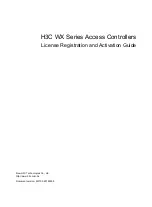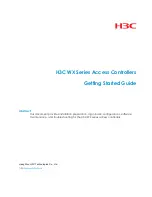
TMP91C824
91C824-163
2008-02-20
(8)
Interrupt service requests and interrupt cancellation
When a serial bus interface interrupt request (INTSBI) occurs, the SBI0CR2<PIN>
is cleared to 0. During the time that the SBI0CR2<PIN> is 0, the SCL line is pulled
down to the low level.
The <PIN> is cleared to 0 when a 1 word of data is transmitted or received. Either
writing/reading data to/from SBI0DBR sets the <PIN> to 1.
The time from the <PIN> being set to 1 until the SCL line is released takes t
LOW
.
In the address recognition mode (<ALS>
=
0), <PIN> is cleared to 0 when the
received slave address is the same as the value set at the I2C0AR or when a
GENERAL CALL is received (All 8-bit data are 0 after a start condition). Although
SBI0CR2<PIN> can be set to 1 by the program, the <PIN> is not clear it to 0 when it
is written 0.
(9)
Serial bus interface operation mode selection
SBI0CR2<SBIM1:0> is used to specify the serial bus interface operation mode. Set
SBI0CR2<SBIM1:0> to 10 when the device is to be used in I
2
C bus mode after
confirming pin condition of serial bus interface to “H”.
Switch a mode to port after confirming a bus is free.
(10)
Arbitration lost detection monitor
Since more than one master device can exist simultaneously on the bus in I
2
C bus
mode, a bus arbitration procedure has been implemented in order to guarantee the
integrity of transferred data.
Data on the SDA line is used for I
2
C bus arbitration.
The following shows an example of a bus arbitration procedure when two master
devices exist simultaneously on the bus. Master A and master B output the same data
until point a. After master A outputs “L” and master B, “H”, the SDA line of the bus is
wire-AND and the SDA line is pulled down to the low level by master A. When the
SCL line of the bus is pulled up at point b, the slave device reads the data on the SDA
line, that is, data in master A. A data transmitted from master B becomes invalid.
The state in master B is called arbitration lost. Master B device which loses
arbitration releases the internal SDA output in order not to affect data transmitted
from other masters with arbitration. When more than one master sends the same
data at the first word, arbitration occurs continuously after the second word.
Figure 3.10.11 Arbitration Lost
Internal SDA output becomes 1 after arbitration has been lost.
SCL line
Internal SDA output
(Master A)
Internal SDA output
(Master B)
SDA line
a
b
















































